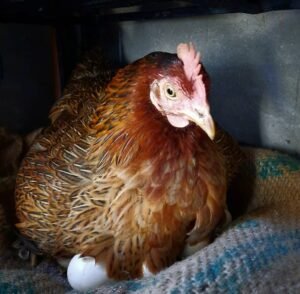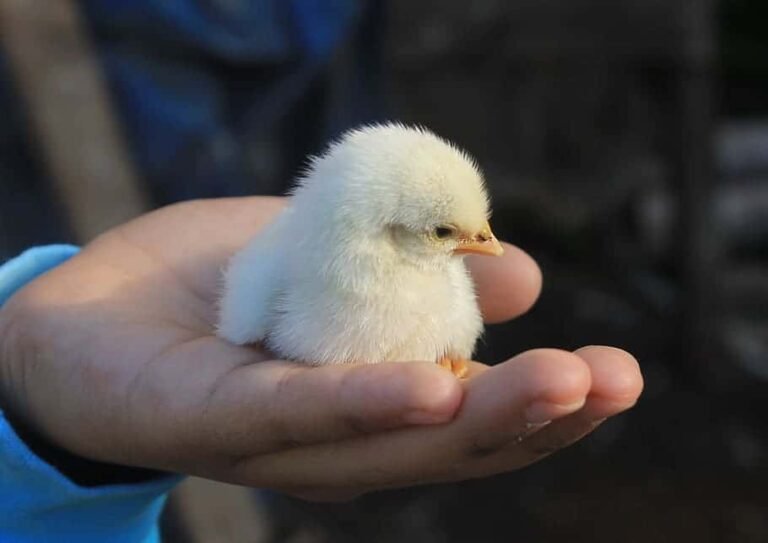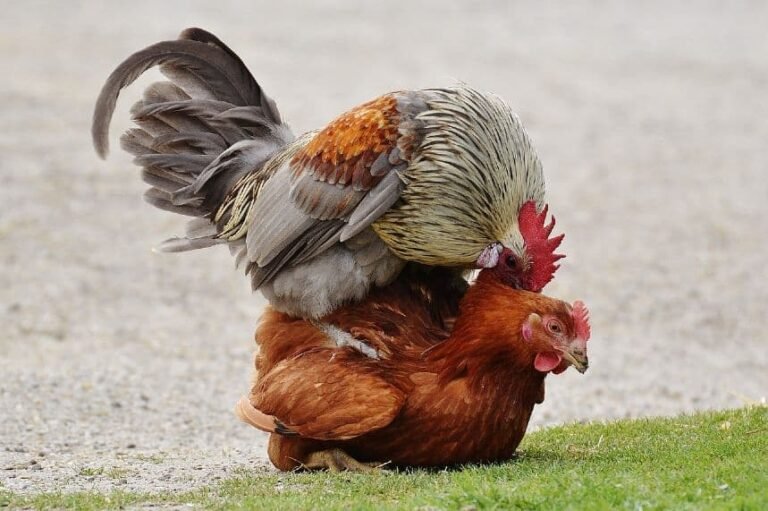How to Make Simple DIY Chicken Nesting Boxes

Are you wondering how possible it is to fabricate DIY nesting boxes for your chicken?
What do I need to construct nesting boxes by myself?
If you are wondering if it’s possible to own a nesting box without breaking the bank, yes, you can by simply doing it yourself.
In this article, we have put together the materials you need to construct your own nesting box by yourself.
And just in case you don’t have a clue of what a nesting box is, not to worry, we’ve answered that question and more.
In just a few minutes, you will get practical steps to make simple DIY nesting boxes.
Shall we?
What are nesting boxes?
Nesting boxes are beds or receptacles where an animal, especially birds, lays its eggs and keeps its young.
You can refer to it as a modified structure especially serving as an abode for day-old chicks and pullets.
Nesting boxes create a safe, comfortable place for your chickens to lay eggs.
What are the types of nesting boxes?
Yes, I bet you do not have any idea that nesting boxes have sizes and types.
Well, yes they do.
The type of nesting box will depend on the type of materials used to make one.
Here are the types of nesting boxes;
- Pallet Nesting Box
- Dish Bin Nesting Boxes
- Roll-Away Nest Box
- Repurposed Mailbox Nesting Box
- 5 Gallon Bucket Nesting Box
- Dresser Drawer Nesting Boxes
- Wooden Half-Barrel Nesting Box
- Plastic Milk Crate Nesting Box
- Frugal Farmer’s Plastic Nesting Boxes
- Basic Wooden Nesting Box for Several Hens
Why do you need a nesting box?
Just like we stated in our article “poultry farm equipment for starters“, a nesting box is one of the important pieces of equipment when starting a poultry farm.
Most farmers wonder if it is something they can do without.
Apparently, you can.
But if you want to get the best out of your farm and laying hens, you need to make available nesting boxes.
Hence the reason why you need to make your chicken nesting boxes through DIY ideas.
Here are some reasons you need a nesting box;
- Nesting boxes are a safe location for your birds.
- Your chickens will only feel safe laying eggs in a nesting box.
- Sometimes, one of the reasons why your chickens are not laying eggs yet is because there are no nesting boxes. If they lay, they laid it in a hidden place.
- With nesting boxes, it’s easier for you to pick your eggs, else you will have to hunt for them in hidden long grass, under the porch, or in a corner of the coop obstructed from view.
- Besides the chickens, nesting boxes are good aesthetics that add to the beauty of the coop.
Factors to consider before making a chicken nesting box.
Before making a simple DIY nesting box, you need to evaluate some factors to see the possibility of getting one.
Factors to consider when making a nesting box include;
1. Materials used for construct
First, you have to source for the materials to build a nesting box.
Some materials are already made such as washbasins etc.
Others you need to gather and construct yourself as you will see below.
Whichever material you choose to ensure it fulfills the criteria below;
- Must be easy to clean.
- Also, it must be stable enough to carry the hen and its eggs.
2. Find a good location to place the box after construction.
Having a nesting box is one thing, strategically placing it for best results is another.
A good location to place your nesting box is imperative when it is time to install it.
Here’s how best to install a nesting box;
- Place the nests in the least traveled part of the coop. This prevents disturbances while hens are laying.
- Secondly, elevate the nest to a height of 1- 3 ft to discourage chicken predators.
- Ensure the nest is at a point where it can not collect debris from the coop floor.
Once these factors have been considered and a solution found, then it’s time to build one.
What are the types of materials used to make simple DIY chicken nesting boxes?
Now you understand that a nesting box is a “do without” on the farm, how do you make yours?
What do you need to prepare as materials to fabricate your safe pen for your chickens?
Just before we launch into that, it’s important you know that nesting boxes can be made from constructed or repurposed materials.
Making a nesting box from repurposed materials
By repurposed materials, we mean materials from around the yard or your house.
Some materials that can serve as repurposed materials include;
- 5-gallon buckets tipped on their sides
- Milk crates
- Washbasins
- Old pet carriers
However, you have to wash and disinfect them before use.
DIY nesting box construction materials
Constructing nesting boxes from materials found around the yard can save a lot of costs and give character to the backyard coop.
Some of the construction materials used to make simple DIY chicken nesting boxes include;
- Wood
- Metal
- Plastic (for stability and easy cleaning)
How do I make simple DIY nesting boxes?
While buying nesting boxes at farm supply stores or online is very possible, it’s more economical to build the boxes yourself.
“I’m not a carpenter”
Of course, you don’t have to be one but you sure do need a guide, hence the essence of this DIY guide to making nesting boxes.
“Are you ready?”
First, get your tools;
- Nails
- Paint
- Hammer
- Screwdriver
- Wood glue
- Table saw
- Paintbrush
- Stiff wire
- Wire cutters
- Drill
- Measuring tape
Now here’s how to DO-IT-YOURSELF;
- Cut the material of choice into the size of the box you want to build. You can use your saw to do that easily.
- Line the boxes with bedding.
- Add a step to it, to help the hens climb up and out of the box.
- Next is to angle the top of the box to prevent the birds from sleeping on top at night.
- Gather fake eggs to draw the attention of the birds.
And you’re done with your simple DIY nesting boxes.
Congratulations!!!

How do I install nesting boxes?
Now that your nesting boxes are ready, how do you install them?
Here’s what to do;
1. Attach nesting boxes to the wall.
To increase the stability of the material used to construct the nest box, attach it to the wall of the coop.
Before that, ensure that the framework of your coop can support the number of boxes you will want to place.
If they are heavy, add extra support to hold them up safely.
However, if it’s a nesting box made from repurposed materials, drill holes that will help you screw them to the wall easily.
2. Ensure the box is well above the ground level.
Up next is to place the box 18-24 inches above the ground.
Ensure you do not place the nesting boxes under roosting perches.
An exception to this installation guide is the Silkie chickens.
Because they do not fly well, you can place the box on the floor.
3. Line the boxes with bedding.
To keep the hens comfortable, line the boxes with bedding.
You can use actual bedding like the one in your home, but for economical choices, you can use;
- Wood shavings
- Straw
- Sawdust
Whichever you prefer, ensure you replace the bedding every few weeks to keep the nest sanitary and attractive.
And once this is set, your nesting boxes are ready to have a tenant.
What next after making and installing simple DIY nesting boxes?
Keep in mind that your chickens will not jump into the boxes because you just made them available.
You have to draw their attention to it especially if it’s the first time you’re using such in your coop.
So what do you do?
Encourage chickens to use nesting boxes.
How?
It’s simple.
Place plastic eggs or golf balls in the nests to draw the attention of your laying hens.
Once the hens consider the nesting boxes as a safe and serene place to lay eggs, chickens will return daily without prodding.
Conclusion
Nesting boxes will help you gather your eggs all at the time without having to stress finding where they are.
If you’ve ever had an experience with your own DIY nesting boxes, share it with us in the comment section.
Frequently asked questions about the DIY nesting boxes
How many nesting boxes do I need in my coop?
Invariably, the number of nesting boxes will depend on the size of your flock.
However, majorly one nesting box goes to four chickens if they are not large enough.
Else refer to the size we outlined below.
That means the chicken to nesting box ratio is 4:1.Are nesting boxes for sleeping?
Absolutely not!! The chickens can go all “mummy” and want to sleep on their eggs, but nesting boxes are not intended for such.
We encourage farmers to encourage their hens to use nests only for laying.
Nesting boxes are not for sleeping.Should my DIY nesting boxes be square-shaped?
Not at all. Nesting boxes do not have to be square-shaped.
However, it should have room enough to house a laying hen, yet small enough to make them feel secure.
The shape of a nesting box shouldn’t matter.What’s the standard size of nesting boxes?
Generally, a nesting box should be about a cubic foot.
It should have comfortable access and its edge is lipped to retain bedding.
However, depending on the size of your chickens, here’s what we recommend;
Standard sized chickens 12″x12″x12″ inch box.
Bantams chickens 10″x12″x10″ inch box.
Larger breeds 12″x14″x12″ inch boxWhere should I put the nesting boxes?
The nesting boxes should be right inside your coop in a quiet area away from the feeding station but not underneath the perches.
Which material is best for making DIY nesting boxes?
Although wood is a good material for nests, plastics are better.
Plastics are lightweight, washable, and durable.Do hens share nesting boxes?
Yes, they do and that’s not good news.
When your hens do the sisterly thing and share nest boxes, they end up breaking the eggs and that’s not good for the farm.
Therefore do all you can to discourage this.
References
- How to Make Chicken Nesting Boxes
- Chicken Nesting Boxes: 13 Free DIY Plans and Instructions
- 10 DIY Chicken Nesting Box Plans You Can Make Today (with Pictures)
- 15+ Chicken Nesting Box Hacks That You Need to Check Out
- 12 Best Chicken breeds for Eggs – chicken breeds for eggs
- When Do Chickens Start Laying Eggs Regularly?
- How Many Eggs Does A Chicken Lay In A Week?
- Fermenting chicken feed – The definitive guide
- 10 Sure Ways To Stop Chickens from Eating Their Eggs [+Bonus]
- 6 Best Chicken Egg Incubators for Chicken Eggs and Other Birds












